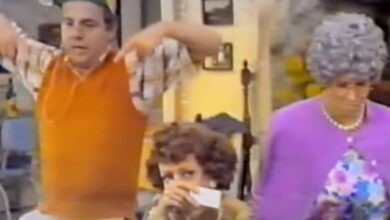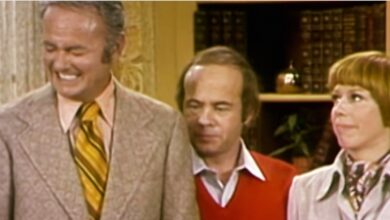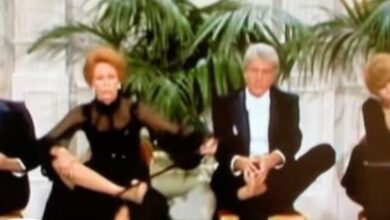Peter & Gordon’s “I Go to Pieces” – A British Invasion Heartbreaker That Captured the Sound of 1965 Sadness
As 1965 began and the British Invasion held firm across American airwaves, a gentle, aching ballad titled I Go to Pieces emerged from the shadows of louder, more aggressive hits. Written by American singer-songwriter Del Shannon and delivered with delicate harmony by Peter & Gordon, the song pierced through the noise with its intimate portrayal of heartbreak. Released at the close of 1964, it gained momentum into the new year, reaching No. 9 on the Billboard Hot 100, signaling that vulnerability, too, had a place in rock’s rising tide.
The duo behind the hit, Peter Asher and Gordon Waller, had already etched their names into music history with the global success of A World Without Love, gifted to them by Paul McCartney. Yet their true identity as artists began to shine with I Go to Pieces. Asher’s precise, upper-register harmonies blended seamlessly with Waller’s resonant and emotive tone. Together, they carved out a niche that favored softness over swagger, leaning toward folk-pop stylings that stood in contrast to the raw rock energy of many contemporaries.
The song’s origin tells a tale of chance and intuition. Del Shannon, celebrated for his 1961 chart-topper Runaway, had initially offered I Go to Pieces to The Searchers, a prominent British group of the era. When they declined, Peter & Gordon encountered the tune and immediately saw the emotional potential it held. Their interpretation didn’t merely follow Shannon’s vision—it elevated it, their melancholic delivery transforming it into a subdued anthem of lost love, filled with aching restraint.
The recording process itself was painstaking and precise. Peter & Gordon, working under EMI’s engineering guidance, sought a minimalistic yet expressive sound. Instead of orchestral flourishes, they leaned into sparse acoustic textures and soft rhythm arrangements, giving space for their harmonies to breathe. The understated instrumentation accentuated the sense of solitude at the heart of the lyrics, making the song feel both personal and universal in its emotional reach.
Once released, I Go to Pieces gained momentum quickly, with radio stations across the U.S. and UK placing it on regular rotation. Its emotional honesty set it apart from the upbeat hits saturating the airwaves, earning praise from critics and fans alike. In a music scene dominated by danceable beats and electrified bravado, Peter & Gordon’s ballad quietly carved out its own territory—one defined by sincerity, reflection, and the slow ache of remembrance.
The song’s success had a cultural ripple effect, subtly steering mid-’60s music toward more introspective directions. At a time when the likes of The Beatles and The Rolling Stones were testing the limits of rock’s boundaries, I Go to Pieces reminded audiences of the power of melody-driven narratives. Its quiet strength echoed through the work of later artists such as Simon & Garfunkel, whose harmonies and lyrical depth bore the hallmarks of Peter & Gordon’s influence.
For the duo themselves, this single marked a pivotal moment. While their earlier successes leaned on connections to high-profile songwriters, I Go to Pieces validated their instincts and emotional range. It showcased their ability to identify and reinterpret material in ways that honored its origin while giving it new emotional color. As a result, they found deeper appreciation from American audiences, opening doors for extended touring and greater recognition in an increasingly competitive music market.
Over time, the song’s resonance inspired numerous reinterpretations. Del Shannon would later revisit his own composition with a recorded version, as did artists like Glen Campbell and Bobby Vee. Each brought their own flavor to the track, but Peter & Gordon’s rendition remained definitive. Their version had struck a balance between fragility and control, a dynamic that proved difficult to replicate despite multiple earnest efforts across decades.
Though musical styles evolved rapidly as the ’60s progressed, I Go to Pieces held its ground as a beloved artifact of the British Invasion era. Radio stations devoted to oldies and classic rock kept it alive, its melancholic charm resonating with each new generation discovering the emotional honesty of mid-century pop. While Peter & Gordon never returned to the top of the charts in quite the same fashion, this single ensured their legacy would endure in the annals of pop balladry.
At the peak of their fame, Peter & Gordon faced the inevitable shifts that altered the paths of many ‘60s artists. By the end of the decade, they had gone their separate ways—Peter Asher pivoting toward a successful producing career, aiding the rise of James Taylor and Linda Ronstadt, while Gordon Waller continued performing and honoring the songs that defined their time together. Their split, though natural, did not dim the lingering glow of their most poignant work.
Decades after its initial release, I Go to Pieces continues to be celebrated as one of the most delicately constructed expressions of post-breakup despair. Its blend of vulnerability and melodic beauty has granted it an enduring place in retrospectives of the British Invasion. Whether heard in passing or revisited with intention, the track invites listeners into a world where sorrow is expressed not with dramatics, but with grace and gentle resignation.
In many ways, the song’s subtle influence outlasted the peak of its creators’ popularity. Its minimalist production and vocal-forward arrangement forecasted the soft rock movement of the 1970s. Artists seeking to strip back layers and return to emotional fundamentals found a blueprint in what Peter & Gordon achieved. They demonstrated that timeless music didn’t require volume or flash—just honesty, restraint, and voices that could carry the weight of real heartache.
Though they are often linked to their Beatles connection through McCartney’s early support, Peter & Gordon left their own distinctive mark with I Go to Pieces. It proved they had the sensitivity and interpretive power to take a song born in one musical context and reshape it into something hauntingly tender. In the quiet ache of their harmonies lies a timeless truth—that even the softest voices can echo the loudest when they speak from the heart.





